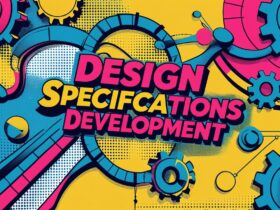Understanding Systems Thinking in UX
In today’s rapidly evolving digital landscape, UX designers face the challenge of creating solutions that are not only user-centric but also adaptable to complex, interconnected systems. This is where systems thinking in UX becomes invaluable. By viewing design challenges through a systems lens, designers can better understand the relationships and interactions within the entire ecosystem, leading to more sustainable and effective solutions.
The Shift from Traditional to Holistic Design Approaches
Traditional UX design often focuses on individual components or user interactions in isolation. However, this approach can overlook the broader context in which these interactions occur. Systems thinking encourages designers to consider the entire system, including the various stakeholders, processes, and technologies involved. This holistic perspective enables the identification of underlying issues and the development of solutions that address root causes rather than just symptoms.
Benefits of Integrating Systems Thinking into UX Design
Adopting a systems thinking mindset in UX design offers several advantages:
- Enhanced Problem-Solving: By understanding the interconnectedness of system components, designers can identify leverage points for effective interventions.
- Improved Collaboration: Systems thinking fosters cross-functional collaboration, ensuring that diverse perspectives are considered in the design process.
- Increased Resilience: Designing with the whole system in mind leads to solutions that are more adaptable to change and less prone to unintended consequences.

Practical Steps to Implement Systems Thinking in UX
To effectively integrate systems thinking into your UX practice, consider the following steps:
- Map the System: Visualize the components, stakeholders, and interactions within the system to identify patterns and relationships.
- Identify Feedback Loops: Recognize how changes in one part of the system can influence others, leading to reinforcing or balancing feedback loops.
- Engage Stakeholders: Involve diverse stakeholders throughout the design process to gain comprehensive insights and foster shared understanding.
- Prototype and Test Holistically: Develop prototypes that consider the system’s complexity and test them in real-world scenarios to assess their effectiveness.

Embracing Change and Building Adaptive Design Practices
The integration of systems thinking into UX design is not just a methodological shift but also a cultural one. It requires designers to embrace uncertainty, remain open to feedback, and continuously adapt their approaches. By doing so, they can create designs that are not only user-friendly but also resilient and responsive to the dynamic nature of today’s digital environments.
Further Resources and Learning Opportunities
For those interested in delving deeper into systems thinking and its application in UX design, consider exploring the following resources:
- Webie: Offers comprehensive digital solutions that integrate systems thinking principles.
- BozzaBench Podcasts: Features discussions on the latest trends and methodologies in UX design, including systems thinking.
- Enhancing Software Quality Through User Experience: An in-depth guide on improving software quality by focusing on user experience.
By adopting a systems thinking approach, UX designers can navigate the complexities of modern digital ecosystems more effectively, leading to designs that are both innovative and sustainable.




























Leave a Reply